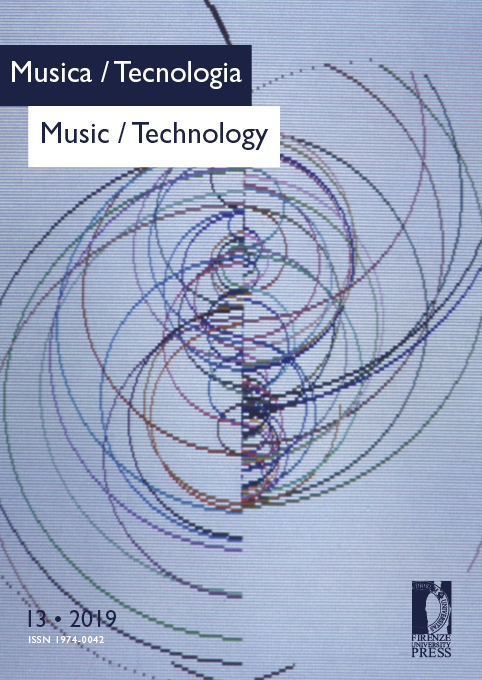Published 2016-06-15
How to Cite
Gabor, D. (2016). I quanta acustici e la teoria dell’udito. Musica/Tecnologia, 10, 9–16. https://doi.org/10.13128/Music_Tec-18433
Abstract
Writing in 1946 and 1947, the author considers the possibility to describe acoustical phenomena with quantum methods, and emphasizes that such an approach on sound analysis connects very neatly with issues in the psychophysiology of hearing. Central to Gabor’s paper is a representation of sound signals including the explicit determination of both frequency and time variables (different from the classic Fourier analysis, where sound is analysed in terms of perfectly periodical oscillations, i.e. oscillations of indeterminate duration). The author illustrates an «information diagram» that splits the sound signal in «logons» or acoustical quanta, e.g. rectangular units of minimal time/frequency area. These latter are formally described as functions or «elementary signals» consisting of a real part (oscillation) and an imaginary part (a pseudo-Gaussian pulse). The author shows that the time/frequency unit area in the information diagram are subject to quantum uncertainty. And that the definition of such unit area of acoustical energy might definitely converge with a number of (then accepted) empirical measurements in the psychophysiology of hearing.Downloads
Download data is not yet available.


